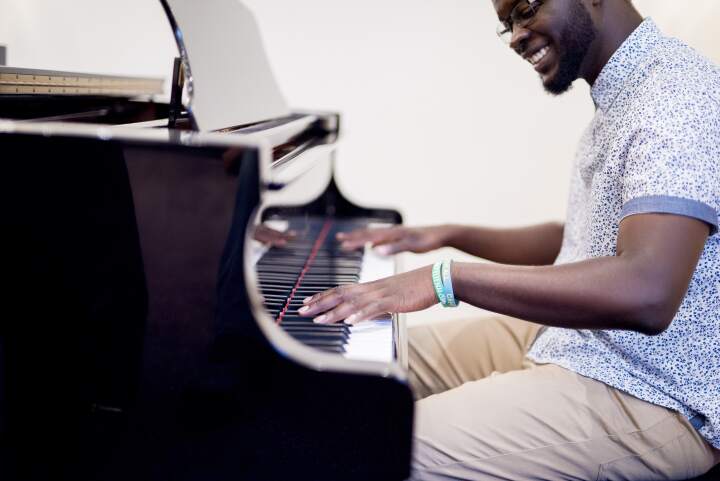
How to Improve Your Improvisation Skills with Backing Tracks
Unlock your improvisation skills with backing tracks. Learn to speak music, master rhythm, and turn scales into real songs.
Can We Really Talk About Improvisation?
Can we really talk about improvisation in music? Let’s see it as a language. Each style of music is like a dialect, with its own chords, phrases, and grammar. Just as we have only 26 letters in our alphabet but countless languages, in Western music we have only 12 notes, yet endless possibilities. When you play, you are speaking through sound, and improvising is like having a conversation.
When someone asks you a question, you do not recite a script. You answer using words, grammar, and emotions you know. Improvisation works the same way. And one of the best ways to improve is to use a backing track. Practicing with tracks helps you find ideas, improve your skills, and make you find your style.
Step One: Start Playing Like You Speak
Think of your guitar or your voice as your tongue. When you start playing over a backing track, avoid filling every bar with notes. Imagine someone talking to you for five minutes without pause. A good solo or phrase has to breathe. Silence is as important as sound.
Treat practice as dialogue. Let the backing rhythm ask a question, then answer with a clear phrase. Do not play everything at once. Focus on small ideas and connect them to scales and chords one step at a time.

The Role of Scales and Theory
Some think theory kills creativity, but it gives you freedom. The major scale, pentatonic scales, modes, arpeggios, and chords are your vocabulary. They do not write the song, but they let you form meaning.
Practicing a scale alone can feel empty. That is why backing tracks matter. They put theory in motion. You hear how notes sound against a chord progression, how they lock into rhythm, and how they shape improvisation. Every lesson becomes alive when played against a real track.
Rhythm: The Core of Improvisation
What separates top musicians from others is rhythm. You can hit all the right notes, but if the rhythm is weak, the piece collapses. Every biography of great musicians shows it: they practiced with a metronome.
A metronome alone can be dry. A backing track gives you groove. You can practice time, strengthen conviction in your playing, and improve your feel. A good improvisation is less about speed and more about how you keep your notes in time.
From Scale to Song
Many beginners think improvisation is about flashy techniques. But the real art is turning a scale into a song. Over a backing track, even two notes can matter if the phrase is right. Clapton often repeated just two notes, and it worked!
So do not just run through scales. Use them to create ideas. One step at a time, connect them to chords and build short pieces. When a track asks a harmonic question, reply with a musical answer.

Context and Progressions
I have seen musicians who could recite entire solos but froze when asked to improvise. Why? They memorized notes but never worked in context. Backings give you the key, chord progressions, and structure to start real improvising. The more you adapt to the track, the more your skills will grow.
Groove and Sound
Many can play the right notes, but the sound feels empty without groove. Improvisation is not correctness but feel. When playing with a track, ask: am I inside the rhythm? Do my phrases breathe?
To improve, keep it slow. Place every note carefully, let the backing track carry you. Real improvising is not in speed but conviction.
Do Not Overplay
It is tempting to fill a solo with techniques and exotic scales. But less is more. Over a track, limit yourself to five notes. See how many phrases you can create. This builds ear, concentration and creativity. A single note in the right key, in perfect rhythm, will move more than a hundred empty runs.
Free Your Improvisation
The goal of backing tracks is freedom. Freedom to play what you feel. Freedom to answer a question without fear. Freedom to create your own song. Every practice session, every phrase, every idea brings you closer. The best musicians may use the same progressions, but their conviction and styles make them unique.

Start Improvising Today
How do you improve your improvisation skills? By treating music as language, by respecting rhythm, by working scales and chords, and above all by playing with backing tracks. These tools help you focus, create, and keep growing.
So pick up your instrument, find the backing track from your favorite song on Karaoke Version, and start. Choose a scale, take one step, and let your ideas flow. It is not about perfection. It is about presence. Let the track ask the question, and let your notes give the answer.
Published on: 13 October 2025



